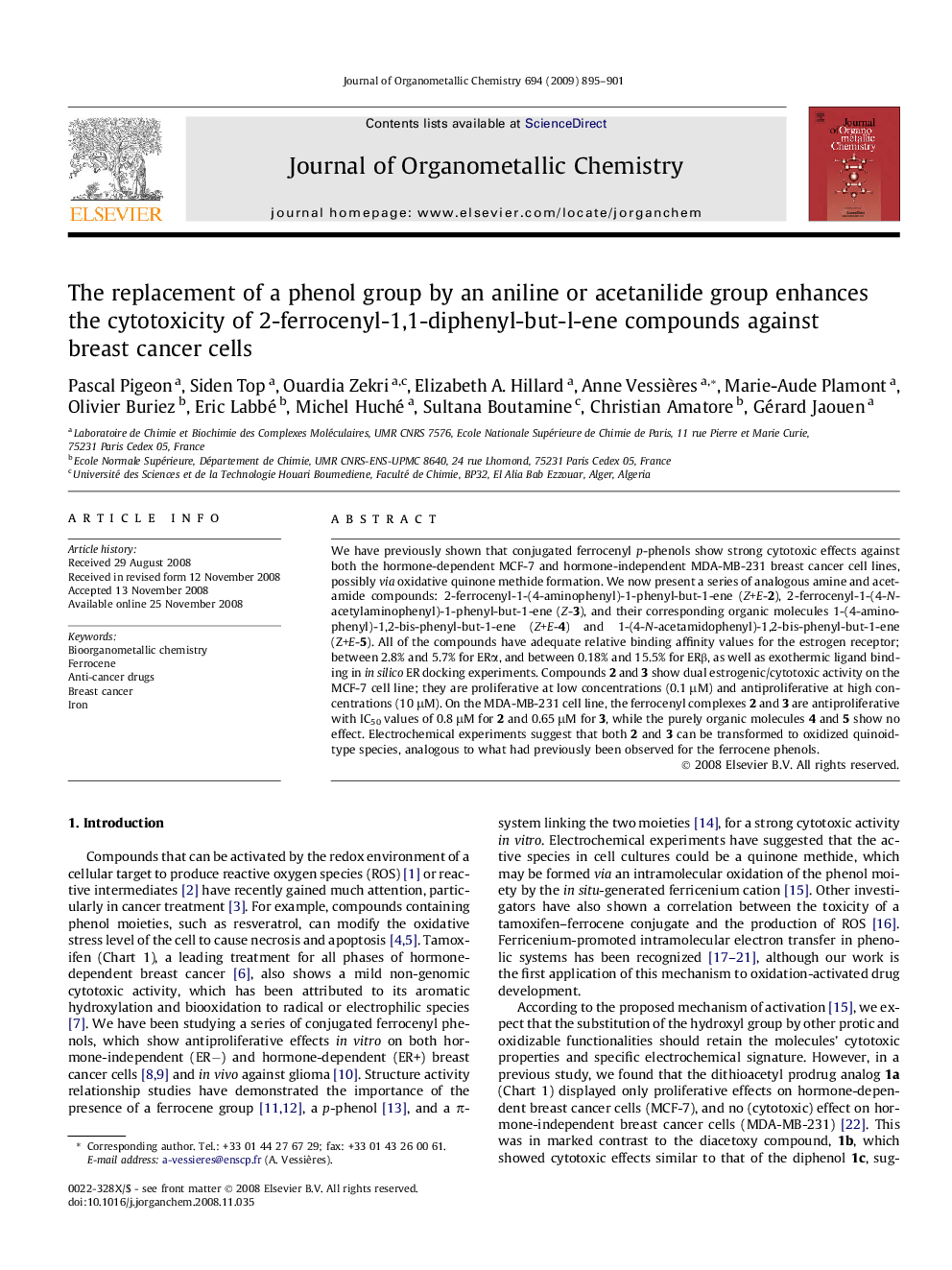| کد مقاله | کد نشریه | سال انتشار | مقاله انگلیسی | نسخه تمام متن |
|---|---|---|---|---|
| 1322863 | 977252 | 2009 | 7 صفحه PDF | دانلود رایگان |

We have previously shown that conjugated ferrocenyl p-phenols show strong cytotoxic effects against both the hormone-dependent MCF-7 and hormone-independent MDA-MB-231 breast cancer cell lines, possibly via oxidative quinone methide formation. We now present a series of analogous amine and acetamide compounds: 2-ferrocenyl-1-(4-aminophenyl)-1-phenyl-but-1-ene (Z+E-2), 2-ferrocenyl-1-(4-N-acetylaminophenyl)-1-phenyl-but-1-ene (Z-3), and their corresponding organic molecules 1-(4-aminophenyl)-1,2-bis-phenyl-but-1-ene (Z+E-4) and 1-(4-N-acetamidophenyl)-1,2-bis-phenyl-but-1-ene (Z+E-5). All of the compounds have adequate relative binding affinity values for the estrogen receptor; between 2.8% and 5.7% for ERα, and between 0.18% and 15.5% for ERβ, as well as exothermic ligand binding in in silico ER docking experiments. Compounds 2 and 3 show dual estrogenic/cytotoxic activity on the MCF-7 cell line; they are proliferative at low concentrations (0.1 μM) and antiproliferative at high concentrations (10 μM). On the MDA-MB-231 cell line, the ferrocenyl complexes 2 and 3 are antiproliferative with IC50 values of 0.8 μM for 2 and 0.65 μM for 3, while the purely organic molecules 4 and 5 show no effect. Electrochemical experiments suggest that both 2 and 3 can be transformed to oxidized quinoid-type species, analogous to what had previously been observed for the ferrocene phenols.
The ferrocenyl and phenyl aniline and anilide derivatives have been synthesized and characterized. Both ferrocenyl complexes show a strong antiproliferative effect on ER-breast cancer cells (IC50 = 0.8 and 0.65 μM) while their corresponding organic molecules have no effect. Interestingly this effect is stronger than that of the corresponding phenolFigure optionsDownload as PowerPoint slide
Journal: Journal of Organometallic Chemistry - Volume 694, Issue 6, 15 March 2009, Pages 895–901